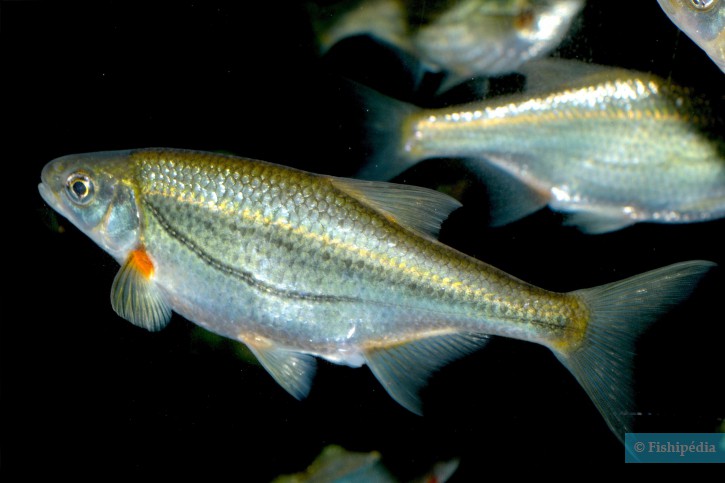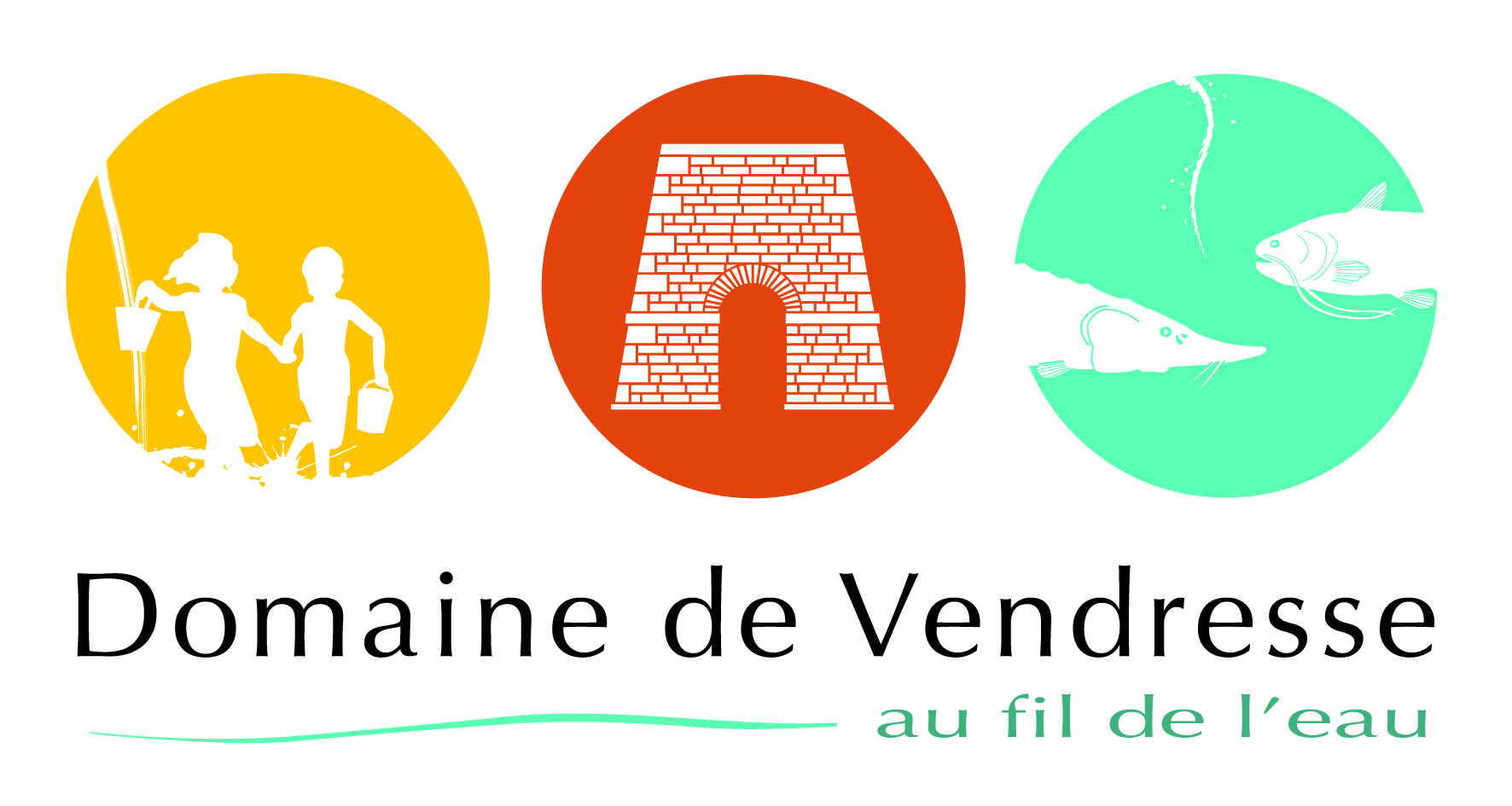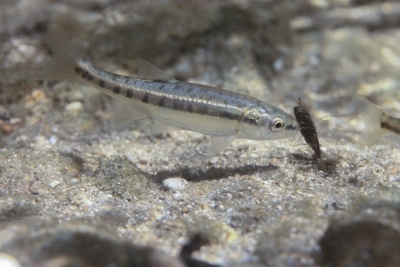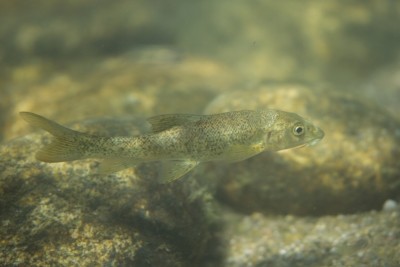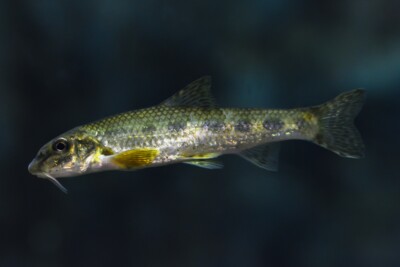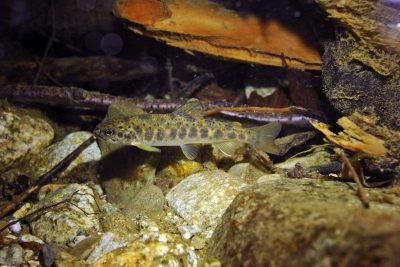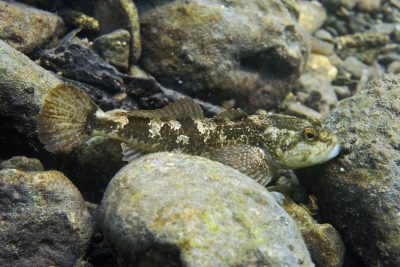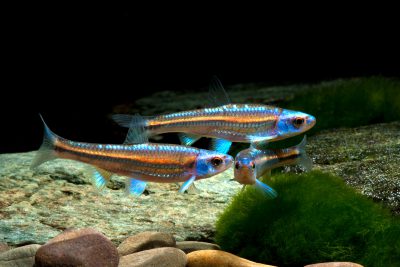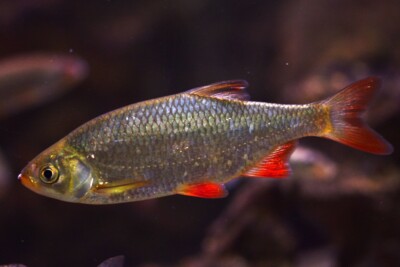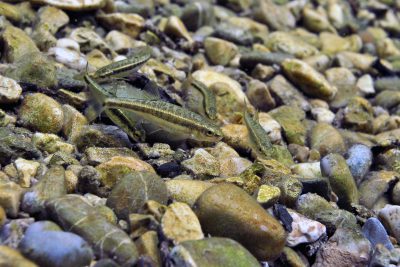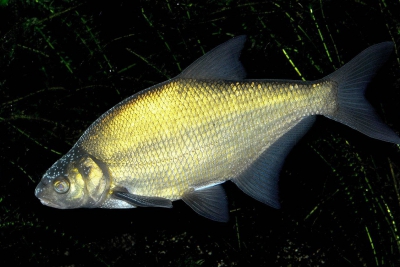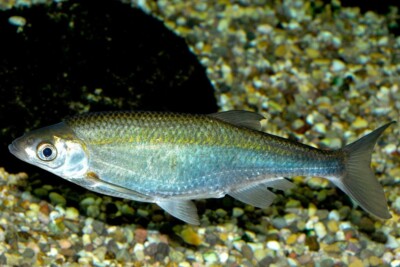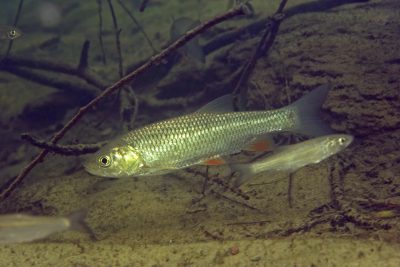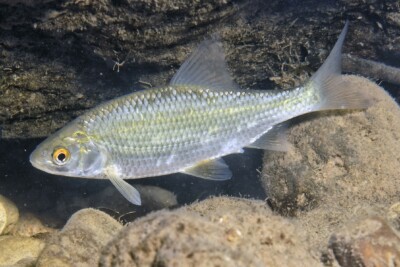schneider
| Scientific name | Alburnoides bipunctatus |
|---|---|
| Descriptor | Bloch |
| Year of description | 1782 |
| IUCN category (World) | LC |
| Family | Leuciscidae |
| Genus | Alburnoides |
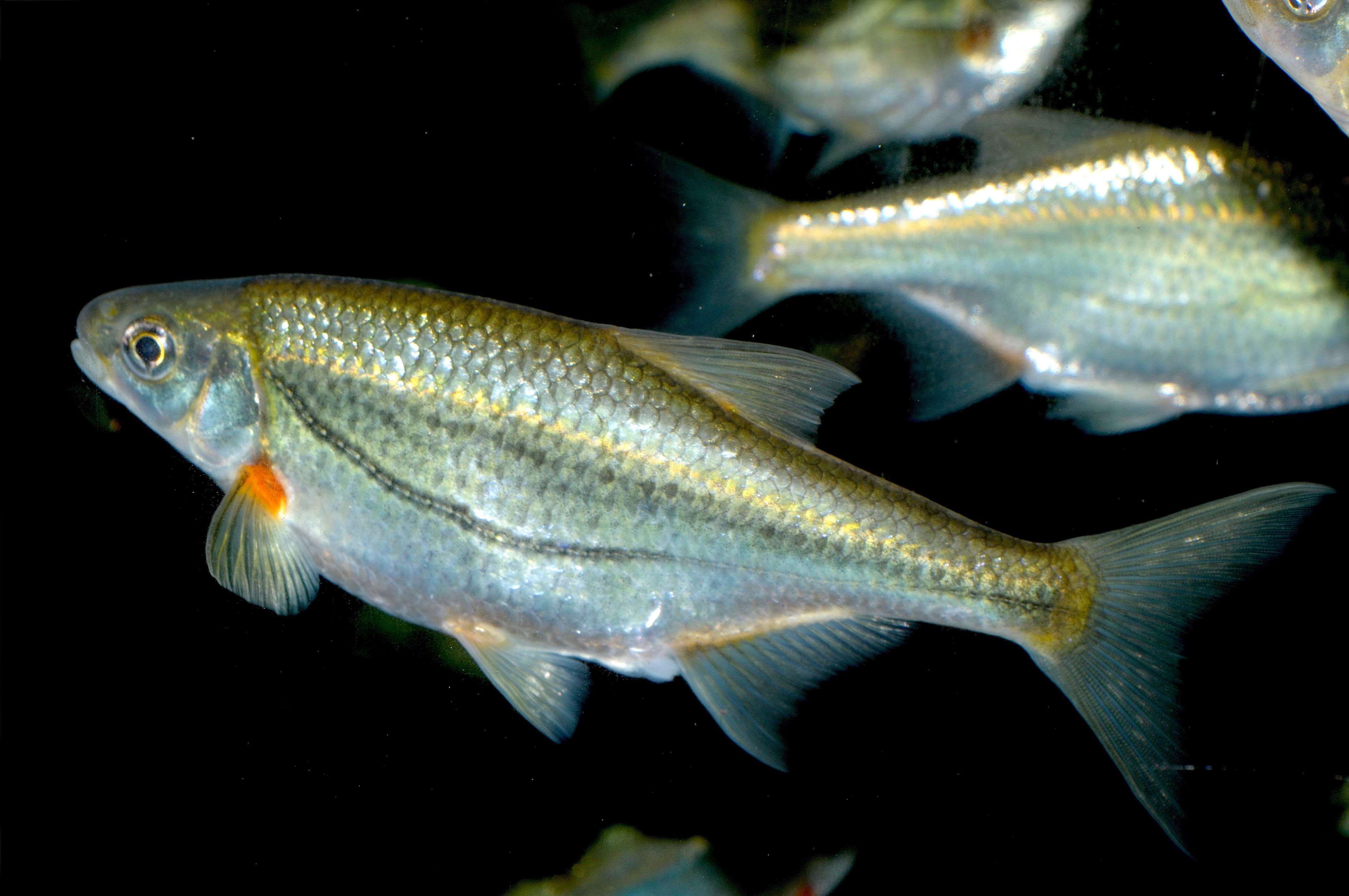

Introduction
Alburnoides bipunctatus, more commonly known as schneider, is a freshwater fish (temperate zone) native to Asia and Europe.
Who is it?
Morphology
-
Average size13 cm
-
Maximum size15 cm
-
ShapeOval
-
Average size13 cm
-
Maximum size15 cm
-
ShapeOval
How to recognize This fish ?
The schneider is two-colored with a very colorful and contrasting body of green and silver. Its silhouette is between that of the bleak and the bream. It has a tall and slender body. It has a slender head with a "terminal" mouth.
Its wavy lateral line is strongly curved downward, accentuated with two rows of black spots and a dark stripe.
Juveniles can be identified early by their thin black line along the back.
Sexual dimorphism
Few differences except during the breeding season, when the egg-laden females have a well-rounded belly.
Behaviour & Life cycle
-
dietcarnivorous
-
Sociabilityliving in shoals
-
territorialNo
-
Way of livingdiurnal
The schneider is a fish living in schools that naturally resides at mid-depth and close to the surface. It is a species with a lively temperament. This species is very active by nature and enjoys large spaces.
It is capable of undertaking long migrations in early and especially late summer and does not hesitate to use fish passages in large numbers. Its potential predators are trout, chub, perch, and zander.
Generally, it is an independent fish that pays little attention to other species. However, it may show some signs of aggression towards its own kind.
Reproduction
-
Reproductionovipare qui pond en eau libre
The schneider is an oviparous fish that spawns on pebbles and gravel in moderate currents. The eggs are briefly introduced into the bottom to which they adhere.
Spawning, which is multiple, begins in April as soon as the water temperature exceeds 12°C and continues until June with a temperature of 18°C.
Harmless species
This species does not represent any particular threats to humans when encountered in its natural environment.
Origin and distribution
What is its habitat?
Natural environment characteristics
-
Temperature10 - 18 °C
-
pH (acidity)7 - 8
-
gh (hardness)1 - 5
-
FlowStrong
Biotope presentation
The species particularly favors clear waters with strong currents and rapids in the barbel zone, but can also be found in the cool waters of some alpine lakes.
Primarily insectivorous, it often feeds in open water on organisms carried by the current. It may supplement its diet with algae (diatoms, chlorophytes, etc.). The substrate is generally composed of pebbles and rocks.
Species of the same biotope
To go further
Sources & Contributions
Participation & Validation
The Fishipedia team and specialist contributors are committed to providing high-quality content. However, although the information comes from scientific sources or testimonials from specialists, the cards may contain inaccuracies.

Patrick Chartrer

Benoit Chartrer
Translation
Translation done with the valuable contribution of our translators, who make this information available to a wider audience. We sincerely thank them for their commitment.
Scientific partners
Species of the same family
Species of the same biotope
